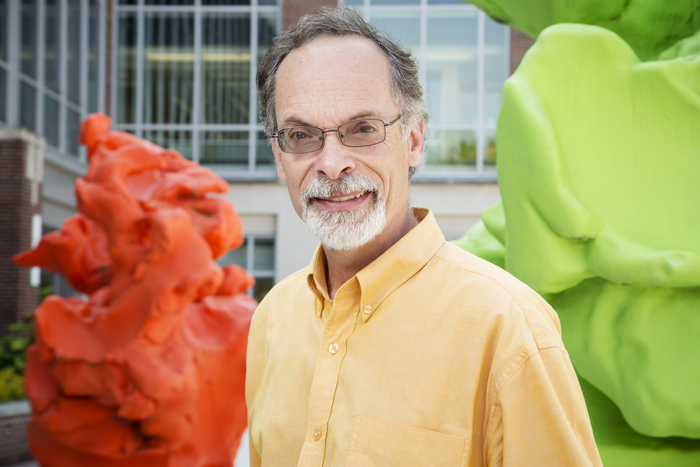URBANA, Ill. — As the northern hemisphere heads into summer, we may be in for a COVID-19 reprieve. Not because the pandemic is over; the Omicron subvariant ‘Arcturus’ is still creeping upward and causing new symptoms. But two new studies from the University of Illinois add evidence supporting a seasonal pattern in the behavior of the SARS-CoV-2 virus.

Credit: L. Brian Stauffer, University of Illinois.
URBANA, Ill. — As the northern hemisphere heads into summer, we may be in for a COVID-19 reprieve. Not because the pandemic is over; the Omicron subvariant ‘Arcturus’ is still creeping upward and causing new symptoms. But two new studies from the University of Illinois add evidence supporting a seasonal pattern in the behavior of the SARS-CoV-2 virus.
The first study, published in Evolutionary Bioinformatics, correlates two years of pandemic data (COVID cases and deaths) with average annual temperature and latitude in 171 countries across the globe. The researchers also evaluated relationships between COVID and environmental health, including indicators of global change.
“We found correlations were significant and maintained as the pandemic progressed, regardless of vaccines or the appearance of new viral variants. Results provide strong evidence that the virus is seasonal,” said study author Gustavo Caetano-Anollés, professor in the Department of Crop Sciences, part of the College of Agricultural, Consumer and Environmental Sciences (ACES) at U of I. Caetano-Anollés is also an affiliate of the Carl R. Woese Institute for Genomic Biology. “Remarkably, the seasonal effects we uncovered were not obscured by the wide range of elimination and mitigation policies applied throughout the world.”
Caetano-Anollés and co-author Nicolas Hernandez showed that correlations between COVID-19 metrics (new cases and deaths, total cases and deaths) and temperature and latitude strengthened during cooler months and at higher latitudes.
“We found that countries with colder average temperatures were generally correlated with higher incidence and mortality rates across the pandemic. This pattern suggests that future seasonal changes could lead to more predictable trends in COVID-19 cases and deaths,” said Hernandez, an undergraduate researcher studying in the Department of Animal Sciences in the College of ACES.
The team also evaluated relationships between COVID-19 metrics and environmental health indicators using Yale’s Environmental Performance Index (EPI) and the State of Global Air report. These databases include scores relating to climate change, pollution emissions, household air pollution, and similar metrics for more than 150 countries globally.
When the team analyzed patterns for March 2021, they found total COVID-19 cases and deaths were correlated with countries’ overall proactiveness to reduce pollutant emissions, such as carbon dioxide, sulfur dioxide, and nitrogen oxides. The analysis also showed higher particulate matter levels and household use of solid fuels were strongly correlated with COVID-19 cases and deaths.
“To improve public health, responsible environmental policies must be established at the country level. These policies should aim to reduce the impact of biotic and environmental stressors,” Caetano-Anollés said. “Harming the environment harms public health as a whole.”
In a second paper, published in F1000Research, Caetano-Anollés teamed up with doctoral student Tre Tomaszewski in the School of Information Sciences at U of I to analyze sequences of more than 12 million SARS-CoV-2 genomes between the start of the pandemic and late July 2022. They watched in a time-series analysis as more than 180,000 mutations appeared, coalesced, persisted, and/or died away across three major variants of concern (VOCs), Alpha, Delta, and Omicron.
The research team tracked the progression across climate zones, finding a marked difference in the uptake of certain groups of presumably advantageous mutations across regions. For example, several haplotypes–gene variations inherited together–weren’t as prominent in the tropics as they were in the northern temperate zone, especially early in the pandemic.
“We found many haplotypes were decoupled by latitude, suggesting seasonal behavior of SARS-CoV-2 is genetically encoded,” Tomaszewski said. “Consequently, seasonal effects could be potentially manipulated through vaccine design.”
Both studies build on earlier work by Caetano-Anollés’ team showing strong latitude-dependent trends in viral evolution. They found latitude-linked patterns in a global analysis of viral genomes early in the pandemic and again in Australia, more recently. They also identified a molecular temperature sensor on the virus, limiting infectivity in hot, humid conditions. Along with the new analyses, the researchers say it all points to seasonality of SARS Co-V 2, regardless of the variant.
“Worldwide correlations support COVID-19 seasonal behavior and impact of global change” is published in Evolutionary Bioinformatics [DOI: 10.1177/11769343231169377]. Authors include Nicolas Hernandez and Gustavo Caetano-Anollés. The research was supported by the College of ACES and the National Center for Supercomputing Applications at the University of Illinois.
“Seasonal effects decouple SARS-CoV-2 haplotypes worldwide” is published in F1000Research [DOI: 10.12688/f1000research.131522.1]. Authors include Tre Tomaszewski, Muhammad Asif Ali, Kelsey Caetano-Anollés, and Gustavo Caetano-Anollés. The research was supported by the National Institute of Food and Agriculture [ILLU-802-909 and ILLU-483-625], the College of ACES and the National Center for Supercomputing Applications at the University of Illinois.
Journal
Evolutionary Bioinformatics
DOI
10.1177/11769343231169377




